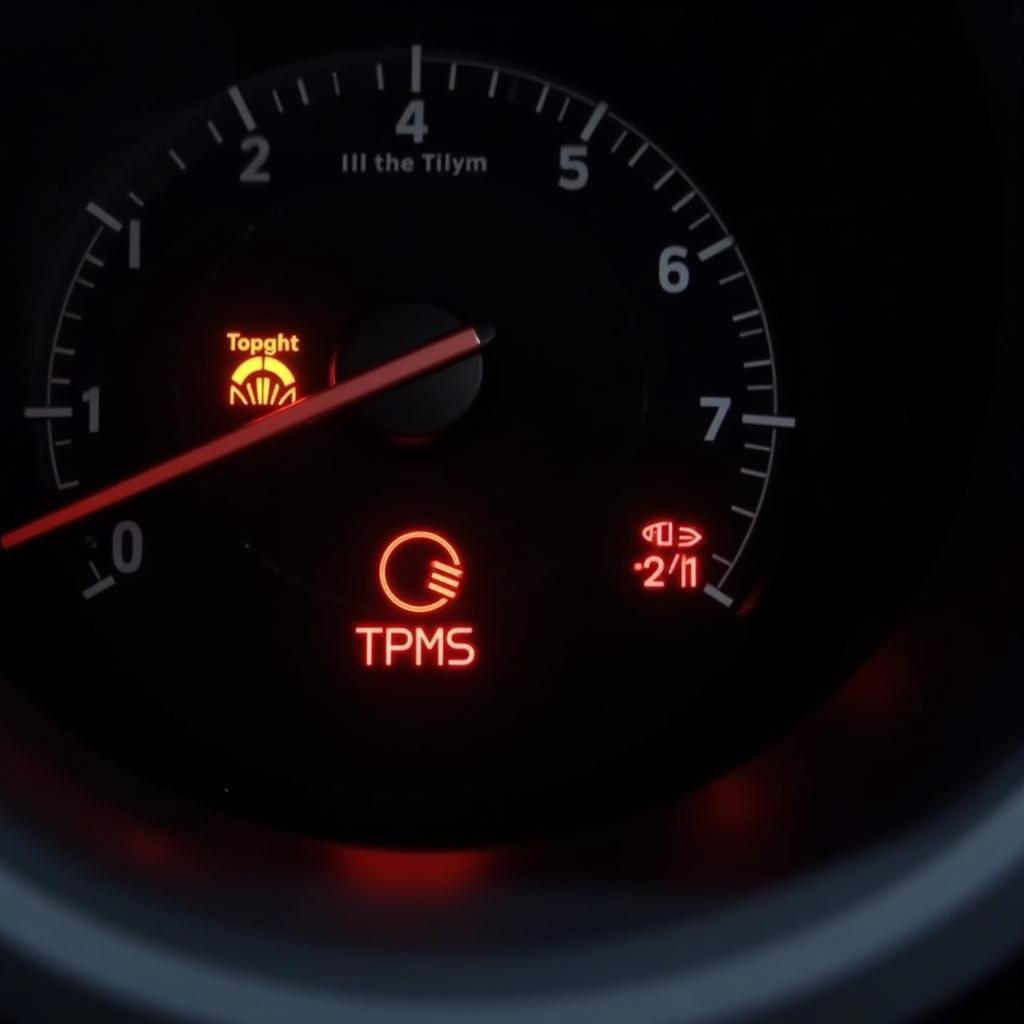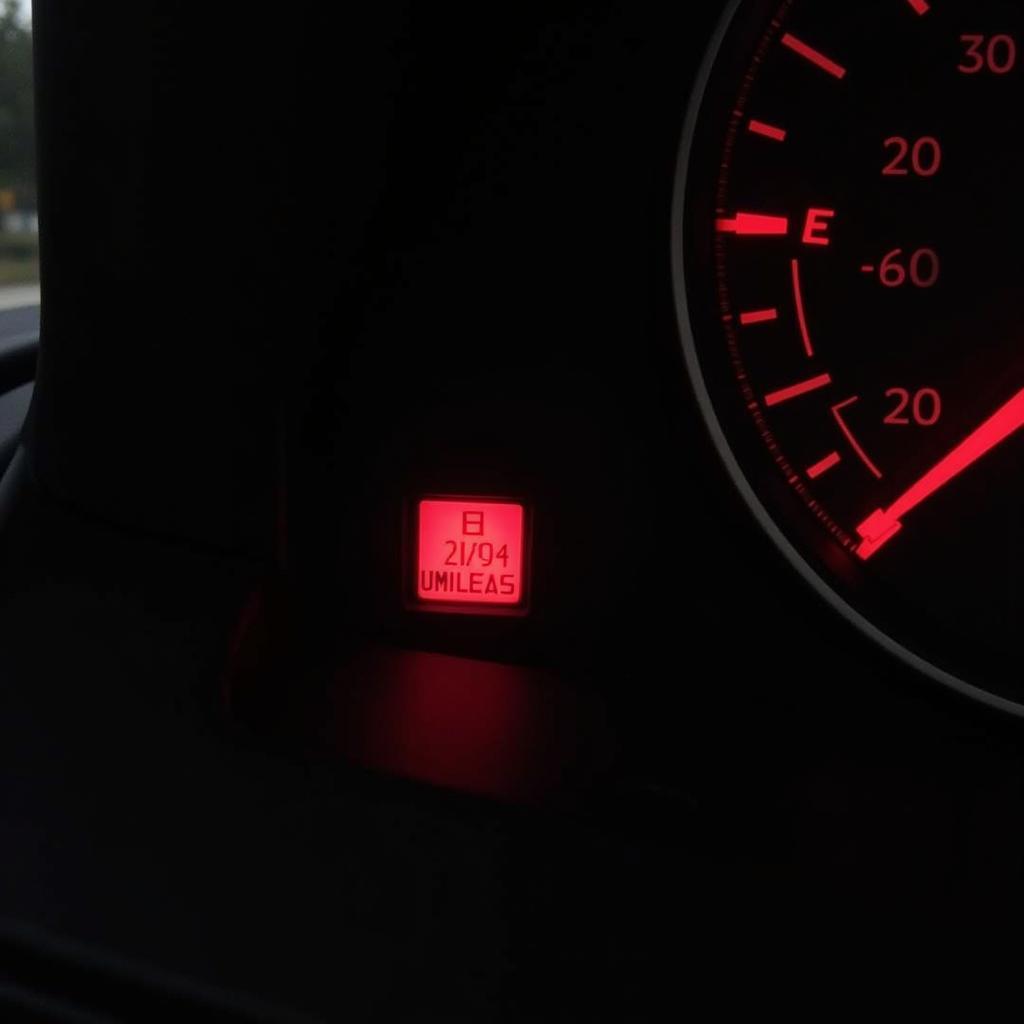If your Kia Rio is displaying both a brake warning light and a TPMS (Tire Pressure Monitoring System) light, it can be a concerning experience. While these systems are separate, their simultaneous illumination could point to a few potential issues. This article aims to shed light on the possible causes and provide insights into diagnosing and addressing the problem.
 Kia Rio Dashboard Warning Lights
Kia Rio Dashboard Warning Lights
Understanding the Warning Lights
Before delving into the causes, it’s important to understand what each warning light signifies:
Brake Warning Light: This light typically illuminates in red and indicates a potential issue with your braking system. It could be something as simple as low brake fluid or a more serious problem like a malfunctioning ABS system.
TPMS Light: This light, often yellow, indicates an issue with your tire pressure monitoring system. It could mean one or more tires are significantly underinflated or overinflated, or there might be a fault within the TPMS itself.
Common Causes of Both Lights Illuminating Simultaneously
1. Low Brake Fluid: The most common culprit is low brake fluid. Your brake system is hydraulic, meaning it uses fluid to transmit force. When brake fluid is low, it can trigger both the brake warning light and, in some Kia Rio models, the TPMS light as a secondary warning.
[Expert Insight: John Miller, Senior Automotive Engineer]: “Many modern vehicles, including some Kia Rio models, have integrated safety systems. Low brake fluid, being a critical safety concern, might trigger multiple warning lights to grab the driver’s attention.”
2. Faulty Wheel Speed Sensor: Your Kia Rio uses wheel speed sensors for both the ABS and TPMS. A malfunctioning sensor can disrupt signals to both systems, causing both warning lights to illuminate.
3. Electrical Issues: Electrical problems, such as a short circuit or wiring harness issue, can cause erratic behavior in multiple vehicle systems, including the braking and TPMS systems.
4. Faulty TPMS Control Module: While less common, a malfunctioning TPMS control module can also trigger both warning lights in some instances.
Diagnosing the Problem
1. Check Brake Fluid Level: The first step is to check your brake fluid level. Refer to your owner’s manual for the location of the brake fluid reservoir. If the fluid level is low, adding brake fluid might resolve the issue. However, it’s crucial to determine why the fluid level is low, as this could indicate a leak requiring immediate attention.
2. Inspect Tires: Check your tire pressure using a reliable gauge. Ensure all tires are inflated to the recommended pressure found on the sticker inside your driver’s side door jamb. If you find an underinflated tire, inflate it to the proper pressure and see if the warning lights reset after driving a short distance.
3. Scan for Diagnostic Trouble Codes: If checking the brake fluid and tire pressure doesn’t resolve the issue, it’s time to read the diagnostic trouble codes stored in your car’s computer. You can do this yourself with an OBD-II scanner or have a mechanic perform the diagnosis.
[Expert Insight: Sarah Thompson, Certified Automotive Technician]: “Diagnostic trouble codes provide specific insights into the issue. These codes act like clues, guiding mechanics to pinpoint the root cause of the problem more efficiently.”
Addressing the Issue
The solution depends entirely on the diagnosed problem:
- Low Brake Fluid: If a leak is present, repair it immediately. If no leak is found, topping off the brake fluid might suffice, but further inspection for hidden leaks is recommended.
- Faulty Wheel Speed Sensor: A faulty wheel speed sensor will need replacement.
- Electrical Issues: These can be complex and might involve tracing and repairing wiring harnesses or replacing faulty components.
- Faulty TPMS Control Module: A malfunctioning TPMS module typically requires replacement.
Concluding Thoughts
Seeing both your brake warning light and TPMS light illuminated on your Kia Rio can be unsettling. While the most common cause is often as simple as low brake fluid, it’s crucial to diagnose the problem accurately. Ignoring these warnings could compromise your safety. By understanding the potential causes and taking the necessary steps for diagnosis and repair, you can ensure your Kia Rio remains safe and reliable on the road.
FAQs
1. Can I still drive my Kia Rio if both the brake warning and TPMS lights are on?
It’s not advisable. Both lights indicate potential safety concerns. It’s best to diagnose and address the issue promptly.
2. How often should I check my Kia Rio’s brake fluid?
It’s good practice to check your brake fluid level at least once a month and top it off as needed.
3. How long can I drive on a spare tire with the TPMS light on?
Spare tires often don’t have TPMS sensors. While you can drive temporarily, it’s best to have the original tire repaired or replaced and the TPMS system checked as soon as possible.
4. Can a weak car battery cause the brake warning and TPMS lights to come on?
While less likely, a weak battery can sometimes cause erratic behavior in various vehicle systems.
5. Is it safe to add brake fluid myself?
Yes, you can add brake fluid yourself. However, ensure you use the correct type of brake fluid recommended for your Kia Rio, as using the wrong fluid can damage your brake system.


